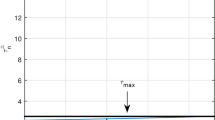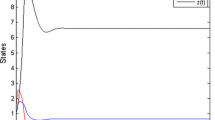Abstract
The stability properties of different harvesting strategies are an important aspect of predator-prey system. Most of the previous studies applied a non-spatial approach such as Lotka-Volterra model. In this paper, a stochastic cellular automata based predator-prey model (EcoCA) was developed and verified by the classical Lotka-Volterra model. The EcoCA was then used to investigate the statistical stabilities of different harvesting strategies of the predator-prey complex. Four groups of numerical experiments have been conducted: (1) no harvesting, (2) harvesting prey only, (3) harvesting predator only and (4) harvesting prey and predator jointly. Two harvesting methods, constant quota versus constant effort, are examined for each group. The effects of harvesting criterion are studied as well, which imposes a limit of population density when execute a harvest. The simulation results showed that constant effort leads to statistically more stable behaviors than constant quota. The joint harvesting of prey and predator with a reasonable constant effort can improve system stability and increase the total yields. In addition, it once again confirmed that space places a significant role in the stability properties of the predation and harvesting system, which indicates the importance to use spatially explicit model in conservation ecology.
Preview
Unable to display preview. Download preview PDF.
Similar content being viewed by others
References
Beddington, J.R., May, R.M.: Maximum Sustainable Yields in Systems Subject to Harvesting at More Than One Tropic Level. Mathematic Biosciences 15, 261–281 (1980)
Azar, C., Holmberg, J., Lindgern, K.: Stability Analysis of Harvesting in a Predator-Prey Model. Journal of Theoretical Biology 174, 13–19 (1995)
Beddington, J.R.: Mutual Interference between Parasites or Predators and its Effect on Searching Efficiency. Journal of Animal Ecology 51, 331–340 (1975)
Brauer, F., Soudach, A.C.: Stability Region in Predator-Prey Systems with Constant Rate Prey Harvesting. Journal of Mathematic Biology 8, 55–71 (1979)
Azar, C., Lindgern, K., Holmberg, J.: Constant Quota versus Constant Effort Harvesting. Environmental and Resource Economics 7, 193–196 (1996)
May, R.M., Beddington, J.R., Clark, C.W., Holt, S.J., Laws, R.M.: Management of Multispecies Fisheries. Science 205, 267–277 (1979)
Beddington, J.R., Cooke, J.G.: Harvesting from a Prey-Predator Complex. Ecological Modelling 14, 155–177 (1982)
Costa Duarte, C.: Renewable Resource Market Obeying Difference Equations: Stable Points, Stable Cycles, and Chaos. Environmental and Resource Economics 4, 353–381 (1994)
Jasen, V.A.A.: The Dynamics of Two Diffusively Coupled Predator-Prey Populations. Theoretical Population Biology 59, 119–131 (2001)
Chen, Q., Mynett, A.E.: Effects of Cell Size and Configuration in Cellular Automata Based Prey-Predator Modelling. Simulation Modelling Practice and Theory 11, 609–625 (2003)
Nowak, M.A., Sasaki, A., Taylor, C., Fudenberg, D.: Emergence of Cooperation and Evolutionary Stability in Finite Populations. Nature 428, 646–650 (2004)
Chen, Q.: Cellular Automata and Artificial Intelligence in Ecohydraulics Modeling. Taylor & Francis Group plc, London (2004)
Chopard, B., Droz, M.: Cellular automata modelling of physical systems. Cambridge University Press, Cambridge (1998)
Hirota, R., Iwao, M., Ramani, A., Takahashi, D., Grammaticos, B., Ohta, Y.: From Integrability to Chaos in a Lotka-Volterra Cellular Automaton. Physics Letters A 236, 39–44 (1997)
Mynett, A.E., Chen, Q.: Cellular automata as a paradigm in ecological and ecohydraulics modeling. LNCS. Springer-Verlag Press, Germany (2004)
Thompson, J.M.T., Hunt, G.W.: Instabilities and Catastrophes in Science and Engineering. John Wiley & Sons, London (1982)
Author information
Authors and Affiliations
Editor information
Editors and Affiliations
Rights and permissions
Copyright information
© 2006 Springer-Verlag Berlin Heidelberg
About this paper
Cite this paper
Chen, Q., Mao, J., Li, W. (2006). Stability Analysis of Harvesting Strategies in a Cellular Automata Based Predator-Prey Model. In: El Yacoubi, S., Chopard, B., Bandini, S. (eds) Cellular Automata. ACRI 2006. Lecture Notes in Computer Science, vol 4173. Springer, Berlin, Heidelberg. https://doi.org/10.1007/11861201_32
Download citation
DOI: https://doi.org/10.1007/11861201_32
Publisher Name: Springer, Berlin, Heidelberg
Print ISBN: 978-3-540-40929-8
Online ISBN: 978-3-540-40932-8
eBook Packages: Computer ScienceComputer Science (R0)




